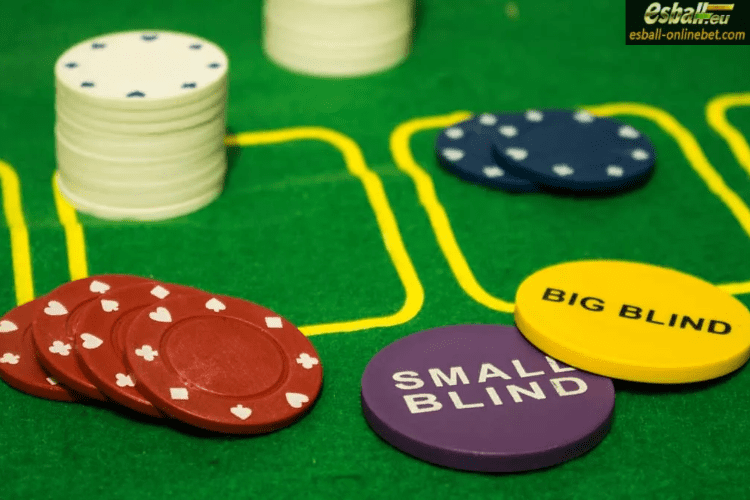
Poker Tournament Rules On Big Blinds and Small Blinds
In the upcoming sessions, I will explain some poker tournament rules and tactics of tournaments, including the distinctions of poker big blinds and small blinds poker.Of course, some seasoned players know that the major poker tournament rules differences between tournaments and live tables lie in two aspects: the survival bonus system and the Texas Hold'em blind escalation system.
Big Blinds and Small Blinds Game Introduction
Hello everyone, in the upcoming sessions, I will explain some poker tournament rules and tactics of tournaments, including the distinctions of poker big blinds and small blinds poker.
Of course, some seasoned players know that the major poker tournament rules differences between tournaments and live tables lie in two aspects: the survival bonus system and the Texas Hold'em blind escalation system. But what does this mean?

Simply put, the survival bonus system means that the further you survive, the richer your prize money. Therefore, players need to eliminate others as much as possible to gain higher rewards.
The Texas Hold'em blind escalation system refers to the blinds increasing with the progression of the game. Its purpose is to compress the players' survival time, making clashes more necessary.
So, making timely collisions with higher winning hands is what Texas Hold'em players need to do in tournaments. However, before delving into relevant strategies, let's first understand how blinds escalate in a typical poker tournament rules.
Big Blinds and Small Blinds Basics
Most players understand that Texas Hold'em blinds signify the beginning of the game. The dealer position is determined at the table, with the player to the left of the dealer placing the small blinds and the player to the left of the small blinds placing the big blind. Subsequently, the action proceeds with the player to the left of the big blind having the first move.
Up to this point, these are the general rules of Texas Hold'em blinds. In tournaments, as time progresses, the blinds will increase, and the so-called "big blind ante" will come into play.
The big blind ante means that, in addition to the blind bet, the big blind player needs to contribute an extra big blind to the pot. This blind bet is considered a dead chip, not a raise. If a player in a later position decides to raise, the big blind player must contribute more chips than usual to complete the call in poker tournament rules.
For example: Texas Hold'em blinds structure 300/600/600
The small blinds poker contributes 300, and the poker big blinds contributes 600 + 600. The second 600 is the dead money in the pot. If everyone folds to the dealer, and the dealer raises to 1200, the big blind must contribute an additional 600 to complete the call.
Poker Big Blinds Small Blinds Strategic Purpose

In regular live games, the significance of blinds might not be too apparent. However, in tournaments, the purpose of blinds is quite straightforward. They represent how long, without participating in hands, we can survive in the current game.
For instance, if the Texas Hold'em blinds are 400/800, and our chip stack is 6000, it means that, without participating in hands and only paying the blinds, we can survive for 6000/(400+800)=5 rounds. We'll delve into the M theory and ICM in more detail in future discussions.
Poker Tournament Rules: Big Blinds Small Blinds Escalation Structure
Next, let's look at the blind escalation structure in poker tournament rules.
Generally, the blind structure in the early stages won't be too aggressive, allowing players to gauge the situation and play accordingly. However, as we move into the middle and later stages, with some players eliminated and the remaining players' chip stacks increasing, the blind escalation will speed up. This encourages players to engage in more aggressive clashes to unearth the ultimate winner.
Here is an example of a blind structure:
| Poker Level | Small Blinds | Big Blinds | Big Blinds Ante |
|---|---|---|---|
| Lv1 | 100 | 100 | |
| Lv2 | 100 | 100 | 100 |
| Lv3 | 100 | 200 | 200 |
| Lv4 | 200 | 300 | 300 |
| Lv5 | 200 | 400 | 400 |
| Lv6 | 300 | 600 | 600 |
| Lv7 | 300 | 600 | 600 |
| Lv8 | 400 | 800 | 800 |
| Lv9 | 400 | 800 | 800 |
| Lv10 | 500 | 1000 | 1000 |
| Lv11 | 600 | 1200 | 1200 |
| Lv12 | 800 | 1600 | 1600 |
As you can see, as we progress further, especially when considering the big blind ante, the blind bets occupy a higher proportion of the total chips. This also means that the survival space is compressed, and players need to actively seek clashes to extend their survival time.
This concludes the introduction to the rules of Texas Hold'em blinds in tournaments. In the upcoming discussions, we will gradually introduce applicable strategies and the tournament powerhouse: the logic and application of ICM. Until next time!
? Claim 2025 IPL Free Casino Bonus Now ?
Click the picture to unlock the promotion and receive your exclusive IPL Esball Casino Code Bonus No Deposit!
Don't miss out on your chance to claim up to 50,000 for FREE! Only valid from 4/21! ⏳
Poker Strategy














